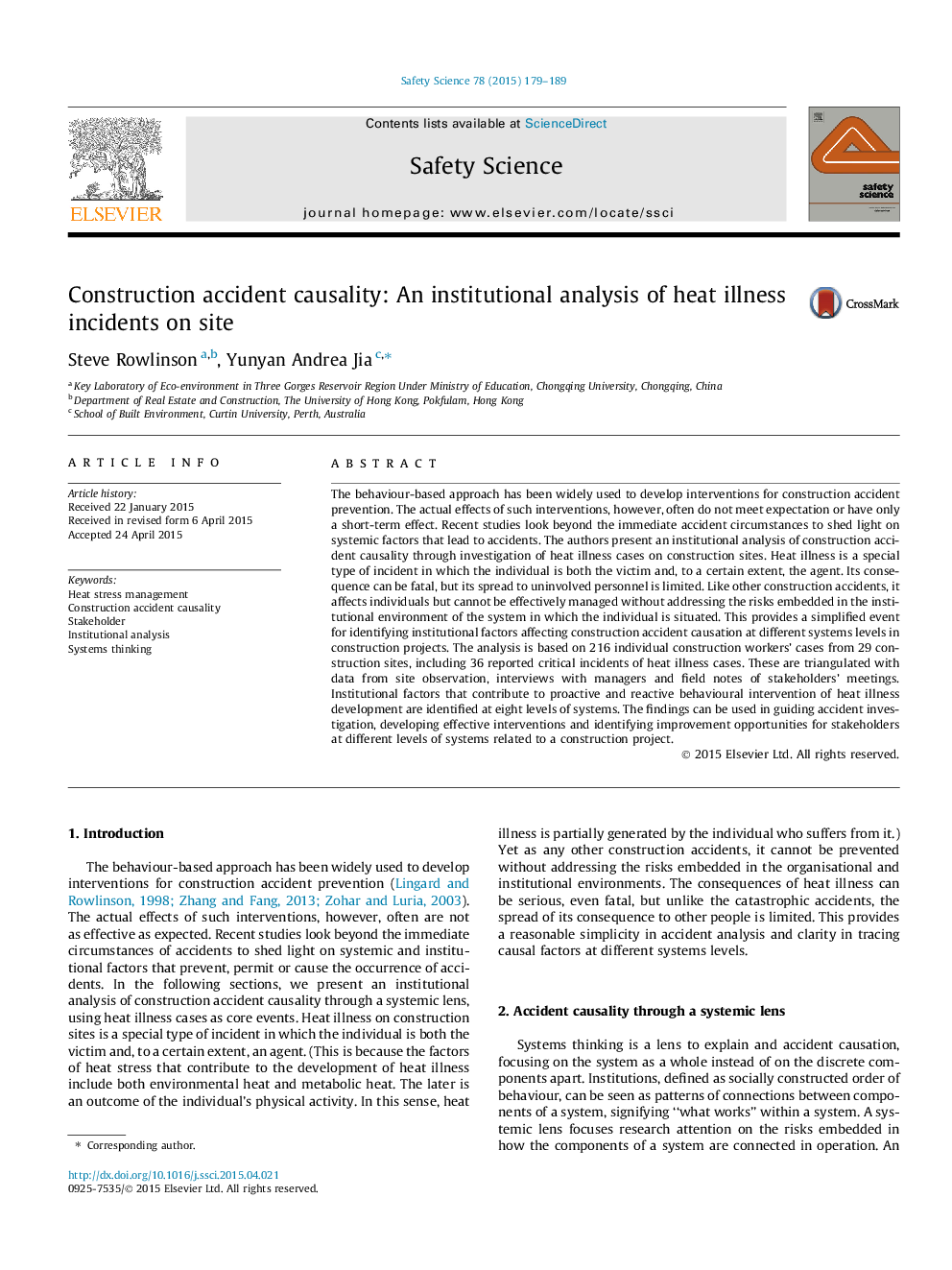| Article ID | Journal | Published Year | Pages | File Type |
|---|---|---|---|---|
| 6975754 | Safety Science | 2015 | 11 Pages |
Abstract
The behaviour-based approach has been widely used to develop interventions for construction accident prevention. The actual effects of such interventions, however, often do not meet expectation or have only a short-term effect. Recent studies look beyond the immediate accident circumstances to shed light on systemic factors that lead to accidents. The authors present an institutional analysis of construction accident causality through investigation of heat illness cases on construction sites. Heat illness is a special type of incident in which the individual is both the victim and, to a certain extent, the agent. Its consequence can be fatal, but its spread to uninvolved personnel is limited. Like other construction accidents, it affects individuals but cannot be effectively managed without addressing the risks embedded in the institutional environment of the system in which the individual is situated. This provides a simplified event for identifying institutional factors affecting construction accident causation at different systems levels in construction projects. The analysis is based on 216 individual construction workers' cases from 29 construction sites, including 36 reported critical incidents of heat illness cases. These are triangulated with data from site observation, interviews with managers and field notes of stakeholders' meetings. Institutional factors that contribute to proactive and reactive behavioural intervention of heat illness development are identified at eight levels of systems. The findings can be used in guiding accident investigation, developing effective interventions and identifying improvement opportunities for stakeholders at different levels of systems related to a construction project.
Related Topics
Physical Sciences and Engineering
Chemical Engineering
Chemical Health and Safety
Authors
Steve Rowlinson, Yunyan Andrea Jia,
